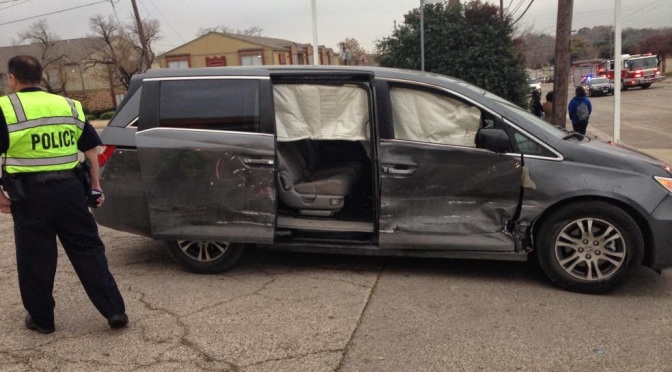(Thanks to the husband for the images below)
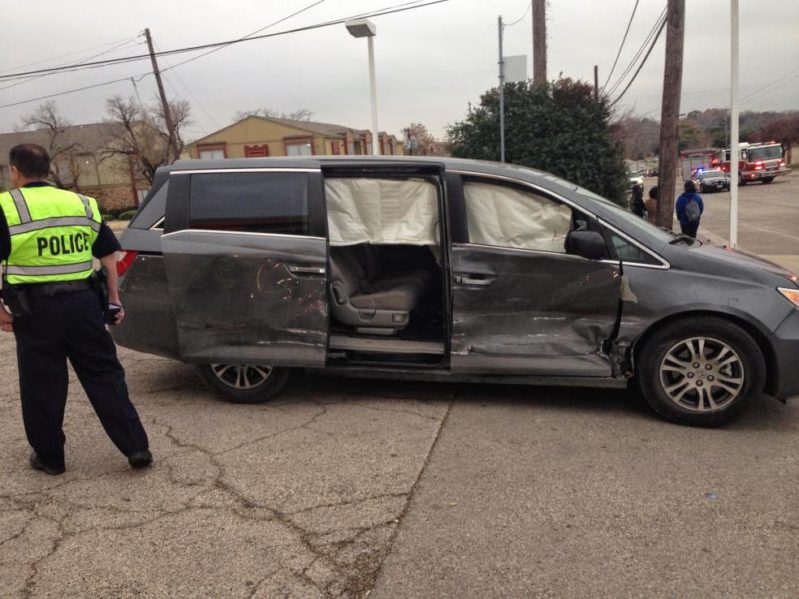 Who:
Who:
An unidentified lady driving a 2012 Honda Odyssey EX was impacted around December 2013 by a man driving a 2001-era Ford F-150. There were no fatalities in this collision.
How:
Per the husband of the lady in the Odyssey, the F-150 collided with the Odyssey because the Odyssey had the right of way at an intersection and did not yield, leading to the side impact at the passenger side of the minivan. Per the husband, emergency responders (police and firefighters) were highly impressed at the degree to which structural integrity was maintained in the Odyssey.
Why:
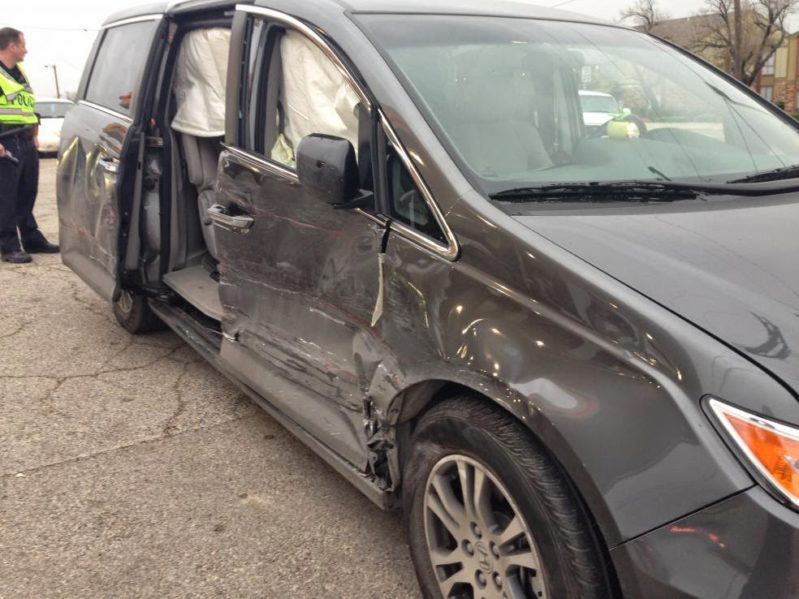 Fortunately, in this case, there were no fatalities. The collision was caused by the failure to yield of the F-150 driver. Fortunately, the relatively low speeds of the collision and the strong structural design of the Odyssey prevented fatalities or serious injuries.
Fortunately, in this case, there were no fatalities. The collision was caused by the failure to yield of the F-150 driver. Fortunately, the relatively low speeds of the collision and the strong structural design of the Odyssey prevented fatalities or serious injuries.
The 2012 Odyssey EX weighs ~4398 lbs and has a “good” side score. It comes with head and torso side airbags in the front seats and head bags for all three rows. Its structural subscore was “good.” The 2001-era F-150 weighs ~4475 lbs and comes with a “poor” front score.
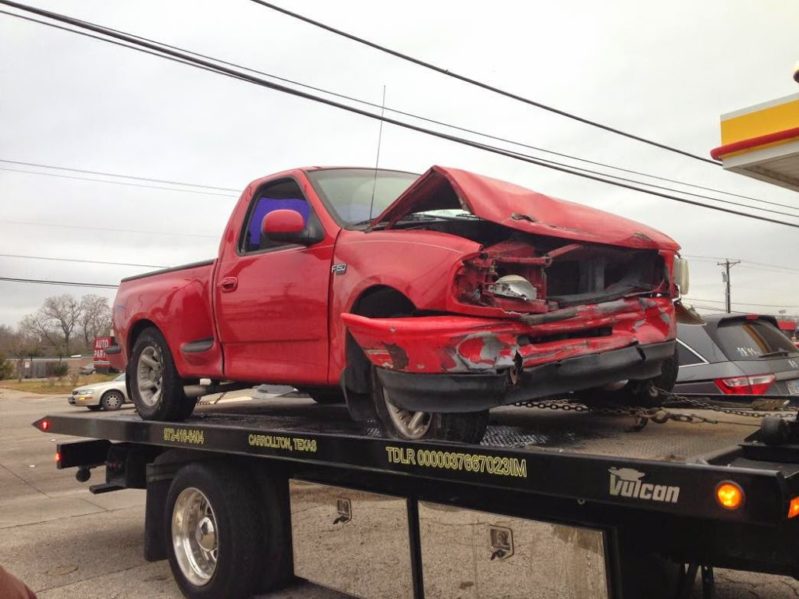 Given the likely speeds of the collision (I’ll estimate ~30 mph, based on front damage to the F-150), the collision likely imparted at least 183KJ of energy into the Odyssey / F-150. The standard side impact test simulates 143KJ of energy (a 3300-lb sled impacting a vehicle at 31 mph). In other words, the Odyssey faced 127% of the force it would have experienced in the types of crashes cars are side rated for. Given these forces and the side score of her vehicle, the Odyssey driver was virtually guaranteed to walk away from this collision, which she did.
Given the likely speeds of the collision (I’ll estimate ~30 mph, based on front damage to the F-150), the collision likely imparted at least 183KJ of energy into the Odyssey / F-150. The standard side impact test simulates 143KJ of energy (a 3300-lb sled impacting a vehicle at 31 mph). In other words, the Odyssey faced 127% of the force it would have experienced in the types of crashes cars are side rated for. Given these forces and the side score of her vehicle, the Odyssey driver was virtually guaranteed to walk away from this collision, which she did.
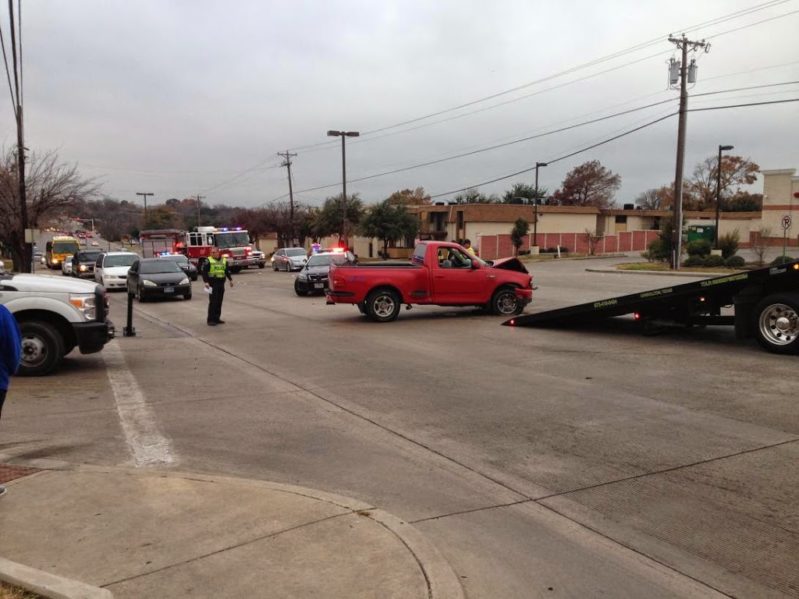 Such a case illustrates the importance of choosing a vehicle with a “good” side impact score. However, it also illustrates the importance of speed in such collisions. Had the F-150 been traveling at only 10 mph faster at 40 mph, it would have imparted nearly twice as much energy into the Odyssey, at 325KJ, despite only traveling 33% faster. I would still have expected the Odyssey driver to have survived such a collision, but in such a collision, she would likely have faced at least minor injuries, and it is quite possible that the F-150 driver would have died, or at least have faced serious injuries, given the poor frontal performance of his vehicle.
Such a case illustrates the importance of choosing a vehicle with a “good” side impact score. However, it also illustrates the importance of speed in such collisions. Had the F-150 been traveling at only 10 mph faster at 40 mph, it would have imparted nearly twice as much energy into the Odyssey, at 325KJ, despite only traveling 33% faster. I would still have expected the Odyssey driver to have survived such a collision, but in such a collision, she would likely have faced at least minor injuries, and it is quite possible that the F-150 driver would have died, or at least have faced serious injuries, given the poor frontal performance of his vehicle.
—
If you find the information on car safety, recommended car seats, and car seat reviews on this car seat blog helpful, you can shop through this Amazon link for any purchases, car seat-related or not. Canadians can shop through this link for Canadian purchases.

